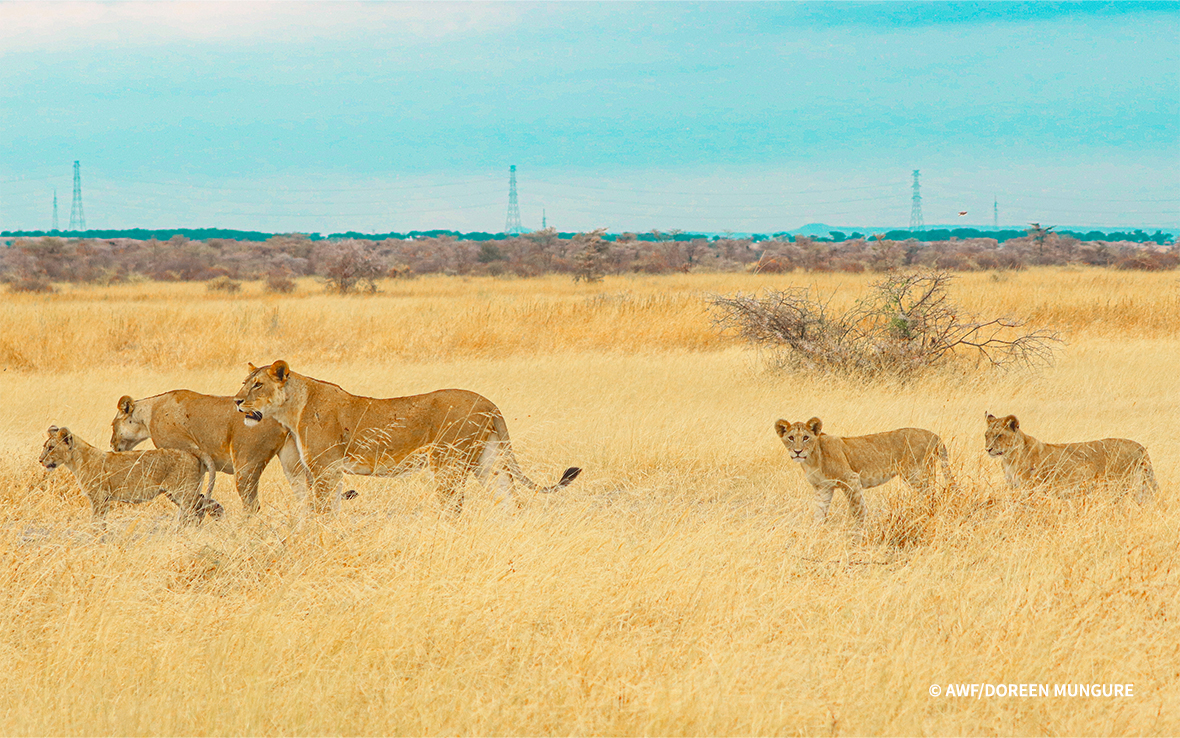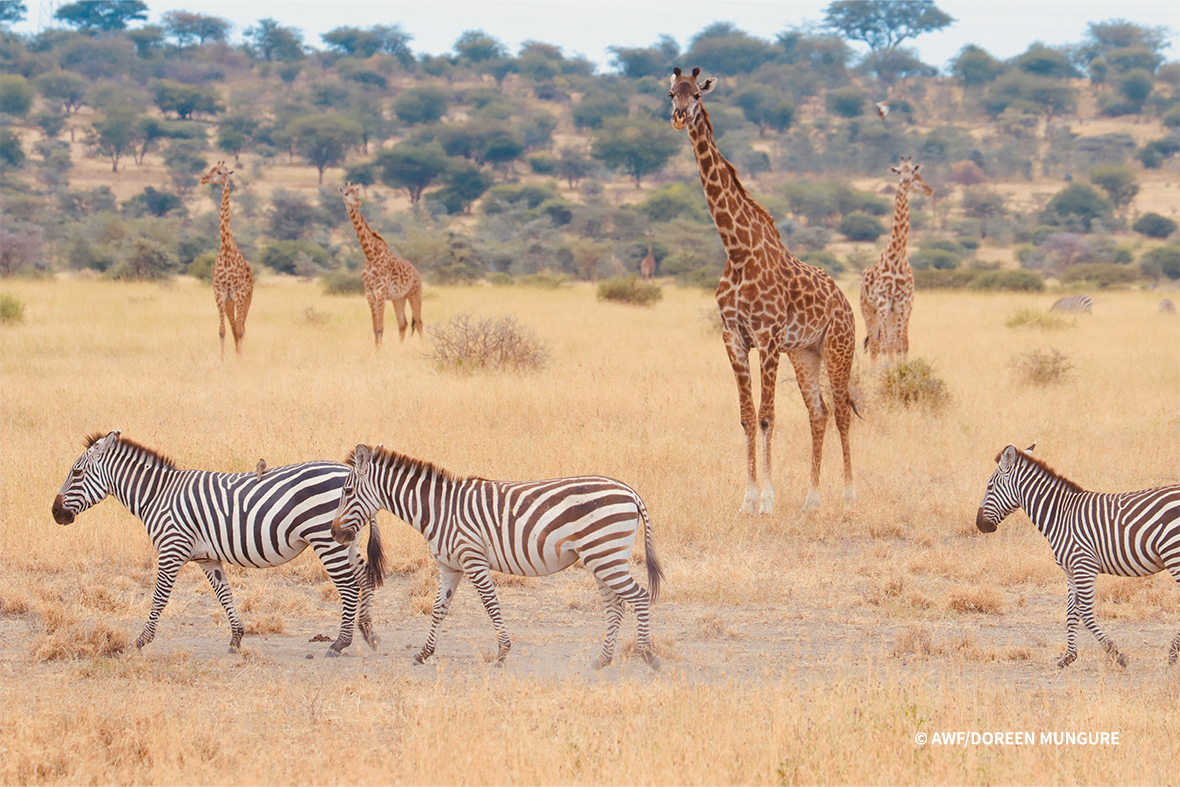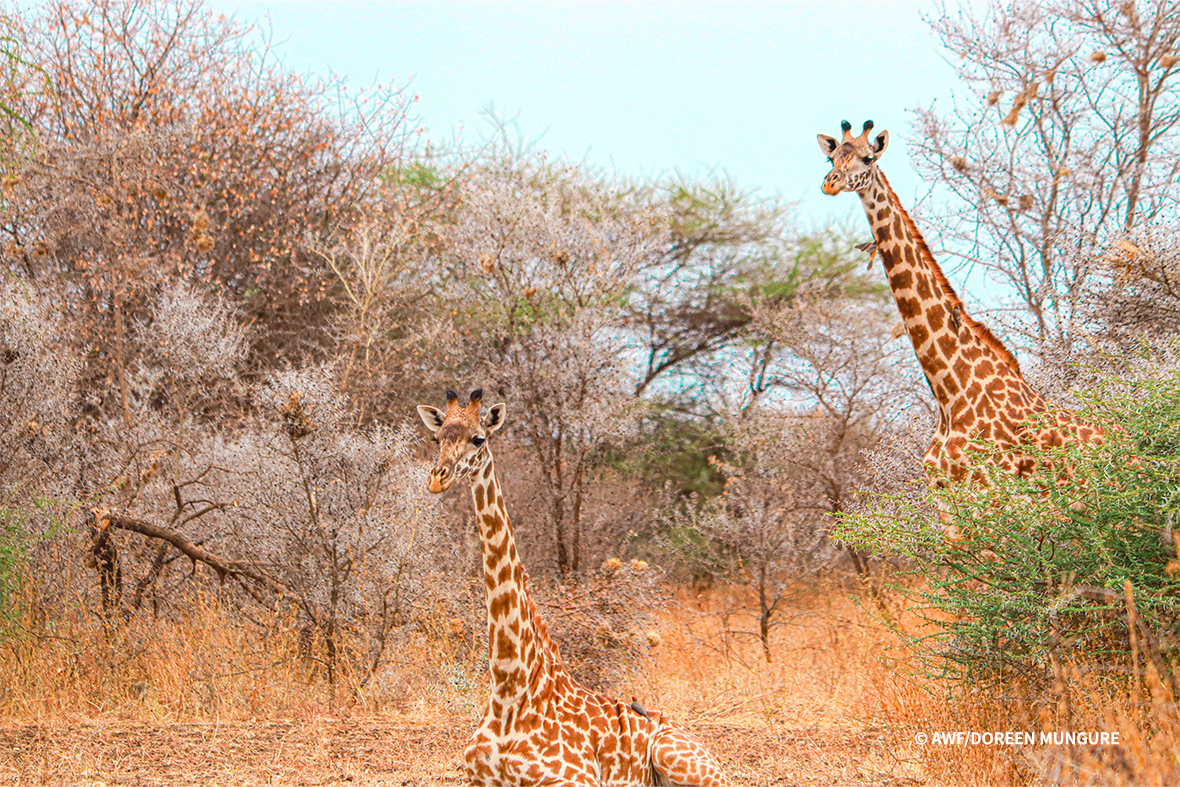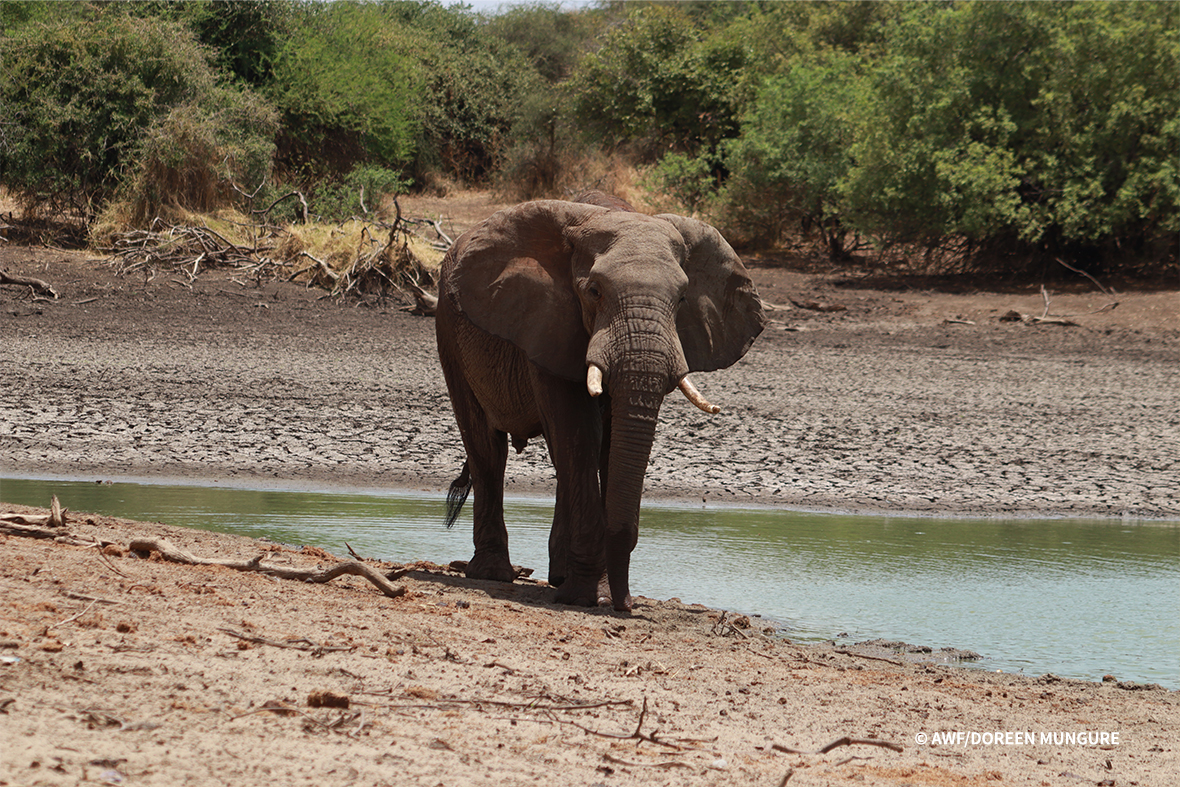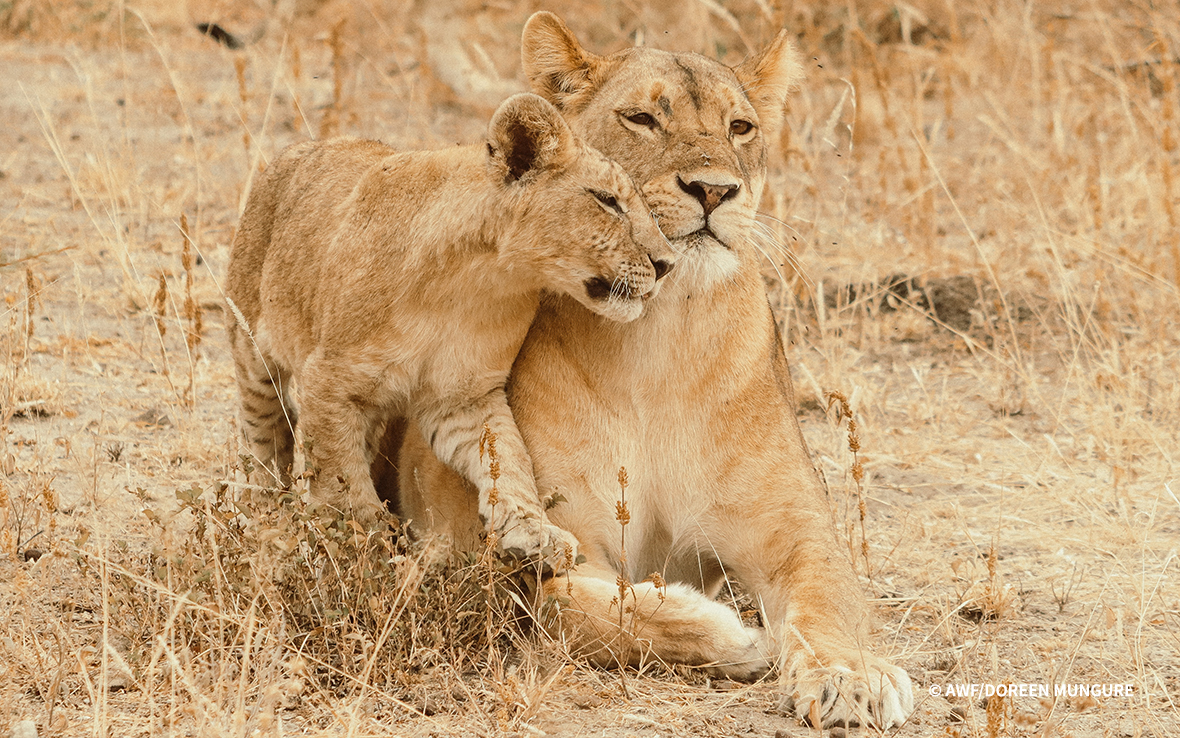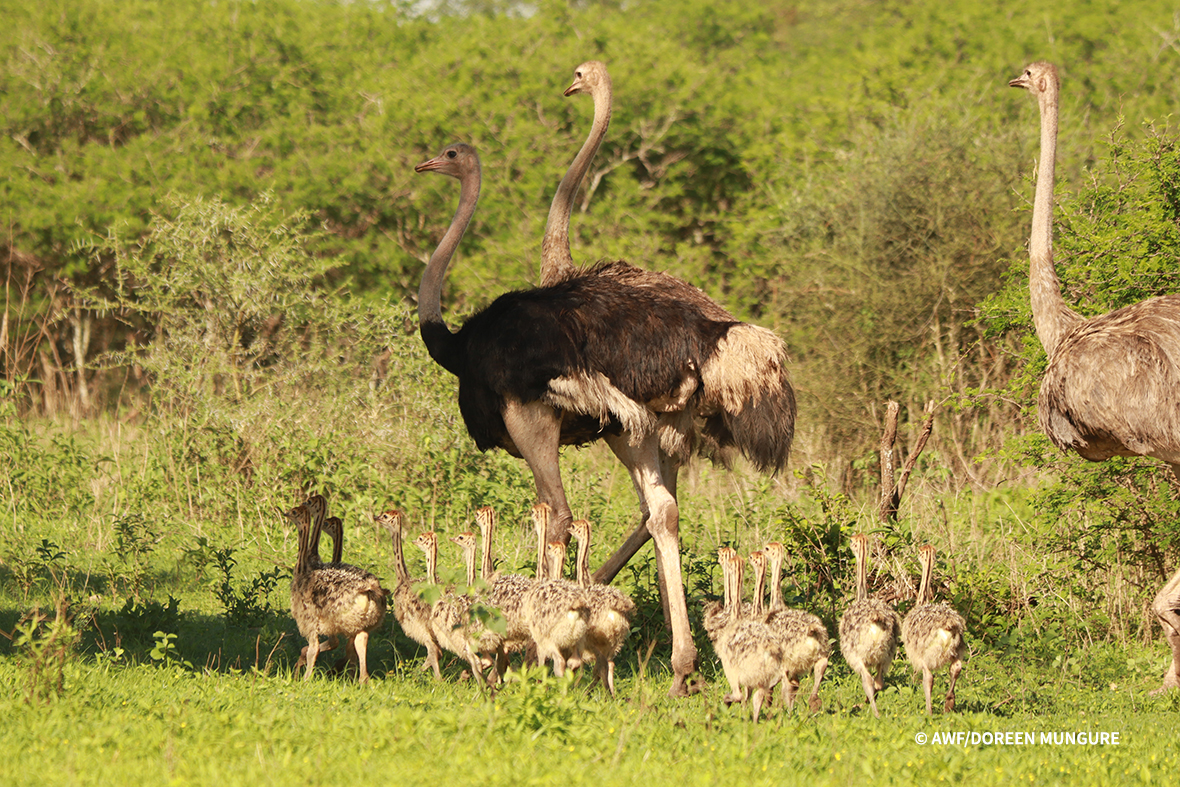Manyara Ranch: A Wildlife Corridor Restored
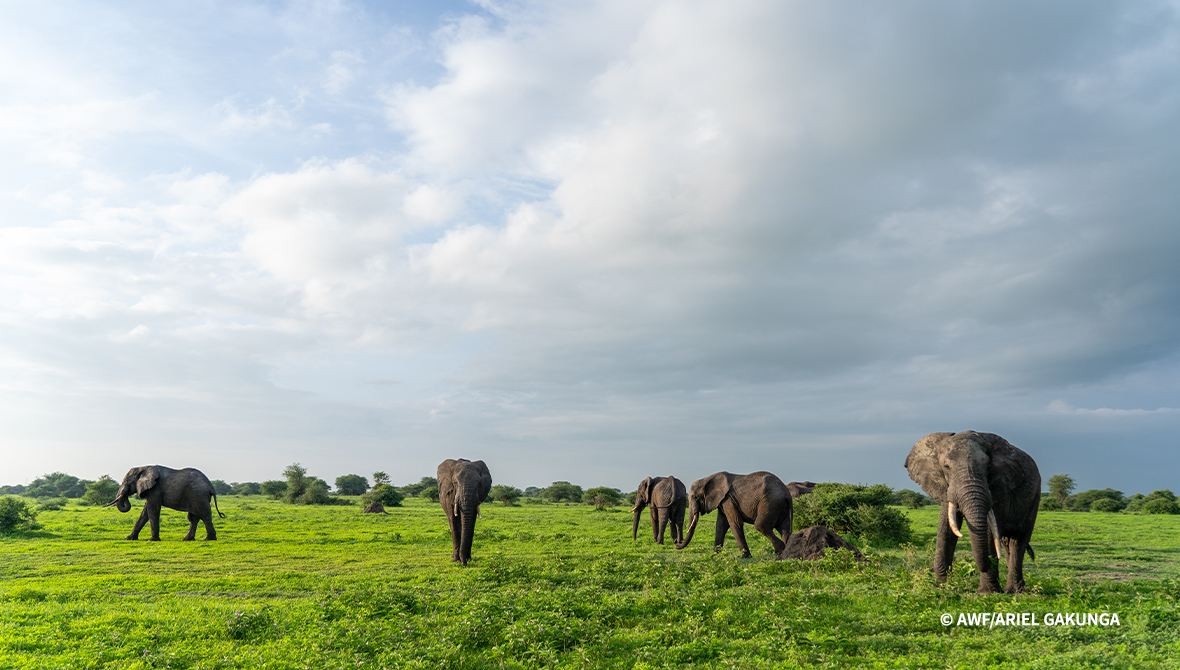
No elephants have been poached at Manyara Ranch since 2015.
Twice a year, when the rains come, thousands of wildebeest in northern Tanzania begin their migration, spreading out from Lake Manyara and the Tarangire River to the plains, where fresh forage and seasonal streams await them. In their wake, they leave copious amounts of dung that enrich the soil and support the vegetal growth of the savanna for all animals. The wildebeest serve as long-distance lawnmowers, trimming grasses across broad swaths of land, helping reduce the frequency of wildfires. And as prey, they are a source of food for predators such as lions, hyenas, and leopards.
Though not as famous as their Serengeti cousins who migrate by the millions, northern Tanzania’s wildebeest migration is equally crucial for the health of the larger ecosystem. In the 1960s, researchers described ten different migration routes the wildebeest followed as they dispersed. Today, however, as a result of habitat degradation and the expansion of farming and mining, just two viable migration routes, or corridors, remain.
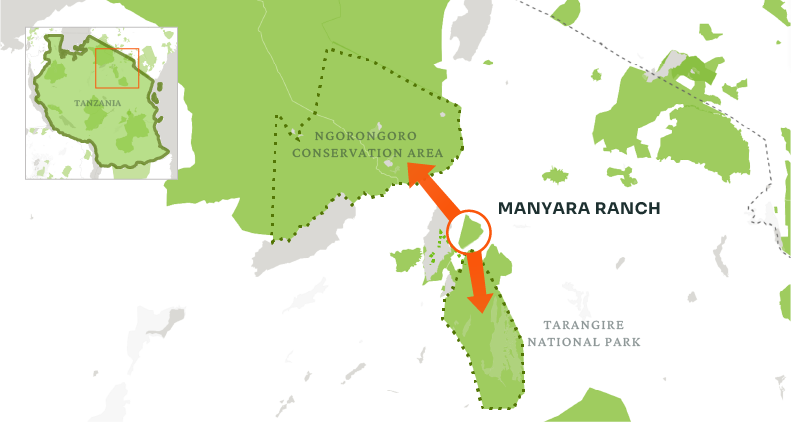
Manyara Ranch lies in an important wildlife corridor between two protected areas.
Manyara Ranch sits right in the middle of one of them, facilitating the migration of wildebeests and supporting populations of zebras, gazelles, and many other animals.
Established as a multi-use community-led conservancy in 2001 with the aim of integrating sustainable livestock management and wildlife protection, Manyara Ranch not only helps protect the all-important wildebeest migration but it also supports a higher density of many species—including elands, lesser kudu, Thompson’s gazelles, and Grant’s gazelles—than even nearby national parks do. Under the management of the African Wildlife Foundation, land-use zoning has revitalized and now maintains the health of the grasslands; game scouts and tracker dogs deter poachers and manage human-wildlife conflict; and the rebuilding and regular maintenance of dams and boreholes provide a reliable source of fresh water in an otherwise dry area.
Wildebeest now are so comfortable at Manyara Ranch that some even stop to have their calves there, says Philip Muruthi, AWF’s vice president of species conservation.
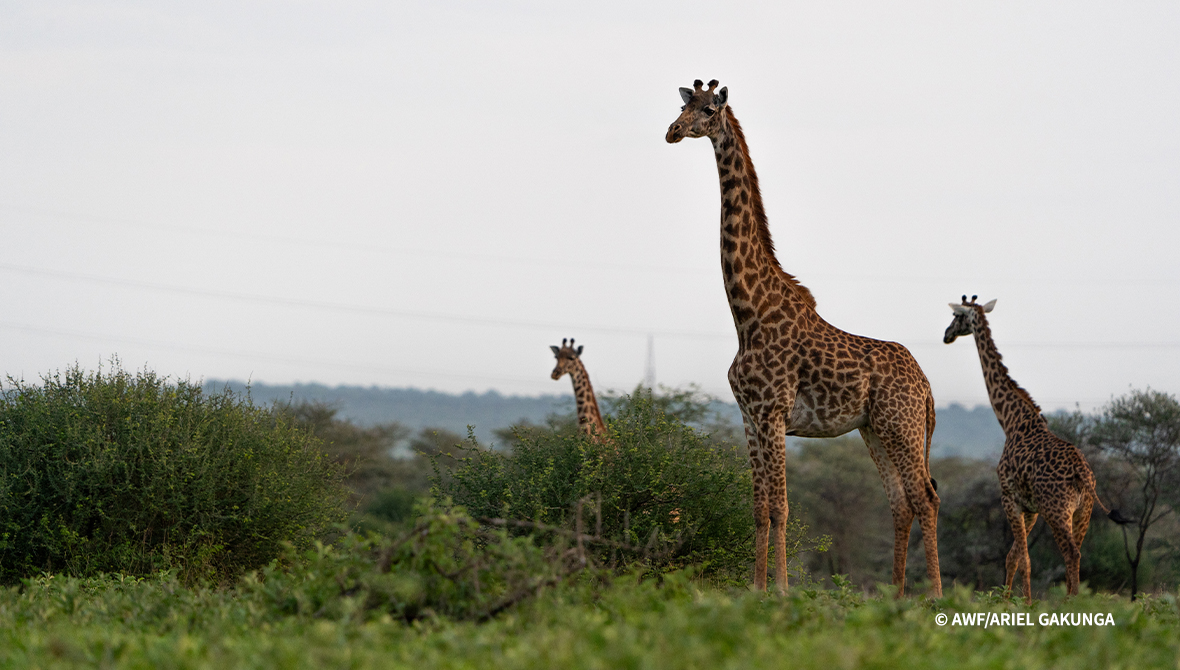
Manyara Ranch is an important giraffe nursery, with the highest reproductive rate for the species in the entire Maasai Steppe ecosystem.
The ranch is also a favorite spot for endangered Maasai giraffes to give birth. With more than 900 counted on the ranch in 2020, this group helps sustain the entire region’s population. Striped hyenas are at home on the ranch, as are lions and elephants, which have not been victim to poaching on the ranch since 2015. Even species such as rare endangered wild dogs and elusive cheetahs now are spotted occasionally. And after no sightings for several decades, rangers encountered a hippo dashing from a thicket into a pond in 2019. While the ranch is most known for its high numbers and rich variety of antelope and other ungulates, ostriches, spring hares, aardvarks, porcupines, and warthogs roam the grassy savannas and acacia woodlands as well.
“One of the key achievements that we are proud to see [is that] the wildlife populations have been recovered,” says Pastor Magingi, AWF’s country coordinator for Tanzania. A healthy habitat not only supports the balance of the Tarangire-Manyara ecosystem more broadly, but it sets Manyara Ranch out as an example of how conservation and human activities such as ranching need not be mutually exclusive.
>>Read the full story of AWF’s work at Manyara Ranch
See below: Recent photos by AWF intern Doreen Mungure display the majesty of Manyara Ranch’s wildlife.
